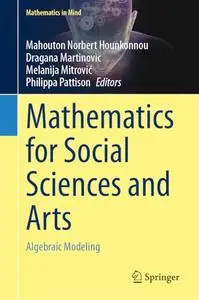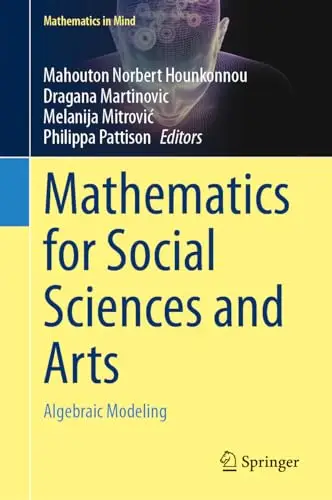Mathematics for Social Sciences and Arts: Algebraic Modeling by Mahouton Norbert Hounkonnou, Dragana Martinovic, Melanija Mitrović, Philippa Pattison
English | PDF EPUB (True) | 2024 | 287 Pages | ISBN : 3031377915 | 21.3 MB
This book addresses interconnections between contemporary advances in mathematics, especially algebra, with applications in the social sciences and the arts. It promotes the idea that knowledge cannot remain in disciplinary silos, rather, it belongs to all people, and is dedicated to associative relationships in a variety of mathematics applications, from sociology to linguistics, including anthropology, semiotics, education, and cognitive science. Contributions illuminate some of the ways in which algebra is developed, learned, understood, communicated, and applied in the social sciences and the humanities.
The content in this book has its origins in a conference, Mathematics for Social Sciences and Arts–Algebraic Modelling, virtually hosted by the Faculty of Mechanical Engineering, University of Niš, Serbia, from the 24th to the 26th of May, 2021. This conference brought together scholars from various disciplines and geographic regions and focused on the juxtaposition of algebra and social science applications. The conference organizers, higher education institutes from four different continents, invited leading scientists in social sciences and algebra, to contribute to this volume.
The first part of this book addresses algebraic and mathematical thinking, specifically learning and practicing mathematics from a cognitive science perspective, as well as illustrative applications to distinctly human concerns, like education and semiotics. The second part focuses on algebraic semigroups and some of their generalizations. This book and the conference that engendered it provide an example of a fruitful collaboration, in which the skills and deep knowledge of algebraic structures, modeling, social sciences and arts brought in by the authors from different countries and continents merge in harmonious ways. These expositions are a rich resource and are of interest both to mathematicians and non-mathematicians.
Without You And Your Support We Can’t Continue
Thanks For Buying Premium From My Links For Support
Thanks For Buying Premium From My Links For Support



